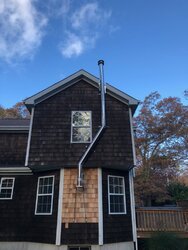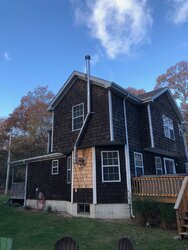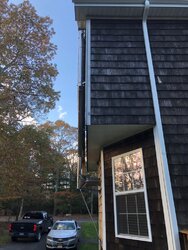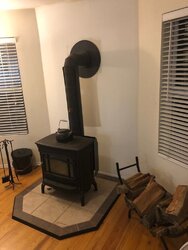Hello all,
I had my Hearthstone Shelburne stove installed 2 years ago. It works great ONLY when the wood is perfectly and there is no down draft. I ruled out any factory defects so now dealing with the down draft.
A friend recommended I try extending the chimney another 2 or 3 feet which I’m prepared to do. However, the installer said it would extend too high above the roof line to be safe. And that was with support brackets. He recommended putting an expensive draft inducer on instead.
My roof line is a bit funky. Think of a Victorian house and the chimney is on the opposite side of the highest peak in the roof.
The other thought was a wind directional cap to deflect those winds coming down the roof line.
The install does have its issues that are the fault of House design.
Check out these pictures and let me know what you guys think. Much appreciated !!
!!
I had my Hearthstone Shelburne stove installed 2 years ago. It works great ONLY when the wood is perfectly and there is no down draft. I ruled out any factory defects so now dealing with the down draft.
A friend recommended I try extending the chimney another 2 or 3 feet which I’m prepared to do. However, the installer said it would extend too high above the roof line to be safe. And that was with support brackets. He recommended putting an expensive draft inducer on instead.
My roof line is a bit funky. Think of a Victorian house and the chimney is on the opposite side of the highest peak in the roof.
The other thought was a wind directional cap to deflect those winds coming down the roof line.
The install does have its issues that are the fault of House design.
Check out these pictures and let me know what you guys think. Much appreciated
 !!
!!




